Mohs Micrographic Surgery
Our board-certified dermatologist, Dr. Ilya Lim, is also a board-certified Mohs micrographic surgeon with extensive training and expertise in this precise surgical technique. With a high cure rate and minimal skin cancer removal of healthy tissue, Mohs surgery is one of the most advanced and effective treatments available for skin cancer.

What Is Mohs Surgery?
Mohs surgery is a procedure treating skin cancer and involves the precise removal of thin layers of skin. These ultrathin layers are each examined for signs of cancer. If cancerous cells are detected, the process continues. Additional layers are removed until there are no more signs of cancer among the removed cells.

What to expect after Mohs Micrographic Surgery

Is Skin Cancer Treatable?
Skin cancer affects a significant portion of the American population, with about 20% of Americans developing some form of it in their lifetime. Our board-certified dermatologist and dermatologic micrographic surgeon, Ilya Lim, M.D., FAAD, offers state-of-the-art skin cancer care, including screenings, diagnosis, and treatment, at his office in Sarasota. With early diagnosis, skin cancer is highly treatable, and Dr. Lim is dedicated to providing his patients with the personalized care and attention they need to manage this condition.
What Are the Results?
The high success rate of Mohs is what makes it a leading technique for treating certain types of skin cancer. When performed properly, Mohs surgery can successfully remove all cancerous tissue 99% of the time. However, a successful Mohs surgery is not the end of the story, as patients will need minor reconstructive surgery to restore their appearance.
A Unique Approach for Outstanding Results
One of the unique aspects of our practice is the synergy between Mohs surgery and oculoplastic reconstructive surgery. Our board-certified oculoplastic surgeon, Dr. Renelle Lim, works in tandem with Dr. Ilya Lim to provide the only practice in Sarasota that can perform Mohs surgery for eyelid lesions and provide eyelid reconstruction in the same location and on the same day. This approach optimizes the cure and restores the appearance and function of the eyelid in a single visit, providing our patients with the best possible outcomes.
Why Choose Our Practice for Mohs Micrographic Surgery?
As a fellow of the American Academy of Dermatology and a member of the American Society for Mohs Surgery, Dr. Ilya Lim is at the forefront of skin cancer removal treatment. With our state-of-the-art facility and advanced techniques, we provide the highest level of care available.
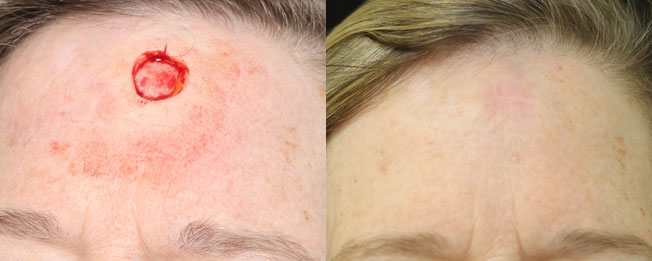
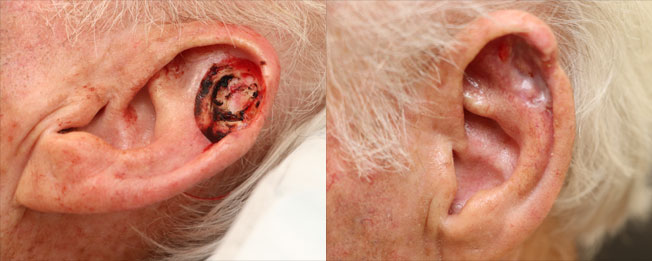
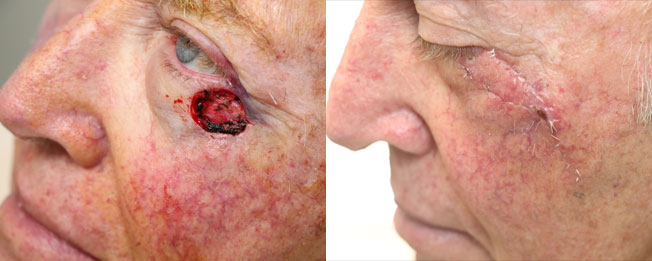
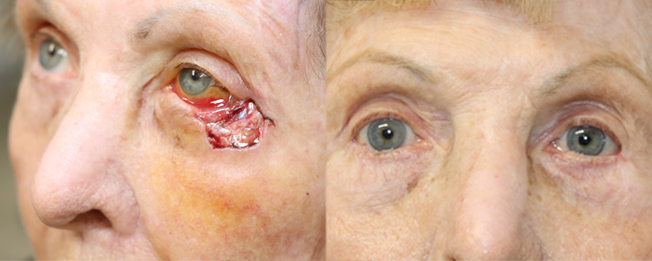
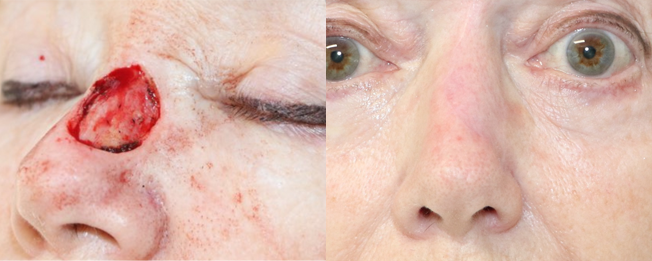
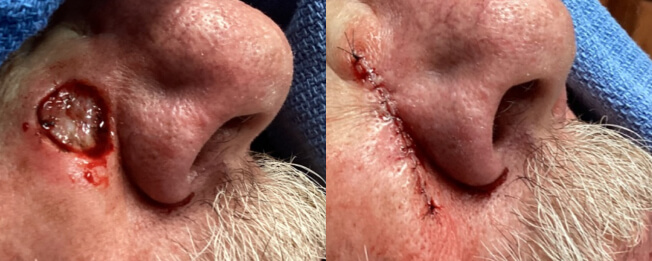
Our Mission Is To Help You Live Your Best Life Every Single Day.
Consult With a Board-Certified Expert
FAQs
Skin cancer is the most common kind of cancer among Americans. It occurs when the skin cells of the epidermis begin to grow out of control. Typically, this occurs due to damage in DNA caused by excess sun exposure or genetic factors. Early detection of skin cancer is crucial to seeing a positive outcome that keeps you safe and your skin looking good. In many cases, patients have a good prognosis, especially if growths are caught early.
- New moles or other skin growths
- Skin growth that changes color
- Skin growth that develops irregular edges
- Skin growth that increases in size
- Skin growth with a lopsided (non-round) shape
- Painful skin growth
- Itchy skin growth
- Bleeding skin growth
The team checks for problems and new developments during your skin cancer screenings, but it’s equally important to monitor your skin at home. About 50% of people with melanoma discover the abnormal growth themselves. A physician is needed to make an official diagnosis, as many growths or lesions may be mistaken for skin cancer. Appropriate diagnosis and evaluation are essential to being matched with an effective, safe, and optimal solution.
Skin cancer treatment depends on a few factors, including the type of cancer, growth size, location, and risk of spreading. The most common approach is in-office dermatologic surgery to remove the growth and a small amount of surrounding tissue. In some cases, you may need radiation, chemotherapy, or both to fully treat the cancer and prevent recurrence. Our dermatologic specialist works closely with each patient to evaluate their case. Treatment options are then explored based on what has the highest chances of success for that patient.
While a single sunburn might not be of concern, routine excess sun exposure can greatly increase your risk of developing skin cancer. Likewise, excess use of tanning beds present the same type of risk as sunlight. Over time, UV radiation exposure can damage the skin, leading to the biological process of runaway cell reproduction (i.e., cancer).
Genetics can play a role in how susceptible an individual is to developing this condition. Some people might spend their entire life under the sun without issue, while others may have a higher risk with minimal exposure. Knowing your personal and family medical history can be important for adapting your lifestyle to match your risk factors.
There are two broad categories of skin cancer, including:
Nonmelanoma Skin Cancers
Nonmelanoma skin cancers include two types of cancer that develop in the top layer of the skin: basal cell carcinomas and squamous cell carcinomas. 80% of skin cancers are basal cell carcinomas, and most of the others are squamous cell carcinomas.
Of these two nonmelanoma skin cancers, squamous cell carcinomas are more likely to move into other layers of skin, but both generally grow very slowly. And, with early detection, the cure rate is very high.
Melanoma skin cancers
Melanoma is a skin cancer that begins within the cells that produce pigment to give your skin color. It’s quite rare but is very serious because melanomas are aggressive.
Melanoma can spread rapidly to other parts of your body if not diagnosed and treated early. It can be fatal if untreated, but early treatment offers a better than 99% survival rate if treated in the localized stages.
All types of skin cancer require medical attention, so it’s important to watch for possible signs of cancer and reach out to the Dermatology in Sarasota if they appear.
The team also recommends annual skin cancer screenings in the office and regular self-skin checks at home, particularly if you have risk factors like being fair-skinned or having a history of skin cancer.
Appointment
